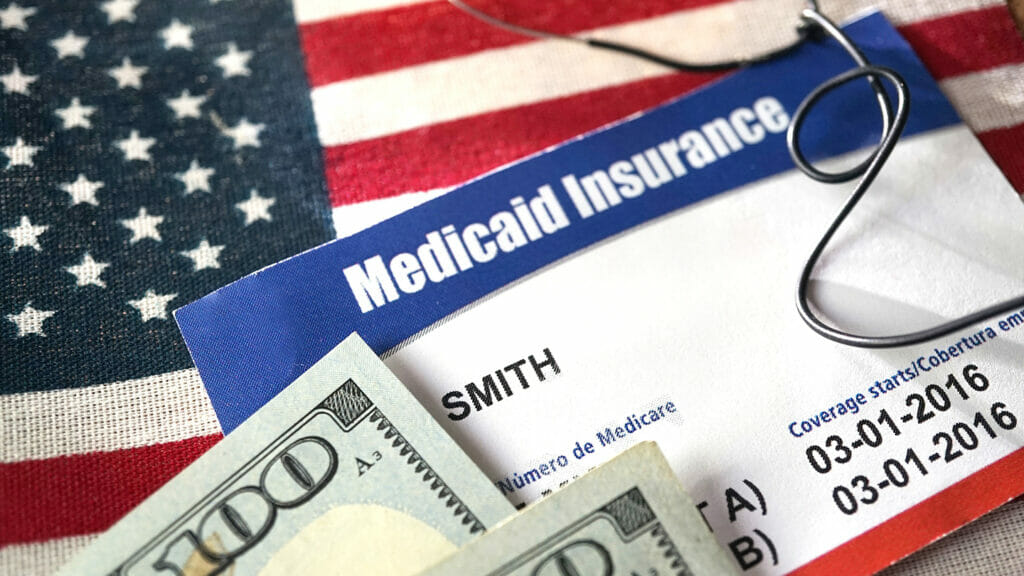
New York long-term care providers are one big step closer to making up Medicaid funding shortfalls 16 years in the making.
In deliberations for the state’s fiscal year 2024-25 budget, both chambers of the Legislature have proposed a reimbursement rate increase that would range between 9.5% and 10.5% total.
The proposed rate adjustment runs contrary to attempts from Governor Kathy Hochul (D) to rein in the state’s Medicaid costs, which currently amount to about $100 billion annually. The historic increase would follow a 7.5% boost in 2023 that was then the largest the state had seen to date.
Despite the potential for two years of historic increases in a row, however, still needed are the first steps in addressing a deep-rooted funding gap that now totals $810 million, according to Stephen Hanse, president and CEO of the New York State Health Facilities Association.
“We need to reinvest in nursing homes as you look at the demographic data going into 2025 and beyond,” he told McKnight’s Long-Term Care News Monday. “New York right now only funds 75% of the care for Medicaid residents in nursing homes and right now about 75% of all nursing homes residents are Medicaid residents. So New York really needs to make a commitment to at least cover the full cost of Medicaid residents.”
Providers had initially asked for a 20% Medicaid increase in 2023.
Joint action
The full shortfall at one point was a staggering 43% gap between Medicaid funding and costs, Hanse said. With the addition of a 2022 state staffing mandate that most New York nursing homes could not meet, many facilities were forced to trim beds. In the past two years, more than 5,000 beds have been lost across the state, shrinking access to care that should ideally be expanded and easing hospital discharge backlogs, Hanse said.
Sector leaders have united in a push to advocate for more funding from policymakers. State provider associations including NYSHFA have banded together with each other, as well as with labor unions such as the SEIU to provide a clear message that eldercare in the state needs more investment.
So far, they have been pleased with the results, Hanse said — despite the dire circumstances.
“It’s really a downward spiral that needs to be reversed. And it’s clear that the Legislature is recognizing that and putting their effort into reversing that spiral,” Hanse explained. “It takes all the providers — everyone speaking in a uniform, consistent voice and educating legislators about our industry.”
That collective action has been vital in securing the first funding victories in years for the New York long-term care sector.
Negotiations continue
Provider leaders have said they are aware that the entire Medicaid gap cannot be made up in one legislative push, but they are encouraging lawmakers to commit to closing that gap as quickly as possible.
Hanse said nursing homes would need a total of $1.6 billion to make up the remaining 25% Medicaid gap. That total could be made up with a $500 million state Medicaid expansion for 2024 and a commitment to rebasing and another $300 million in 2025 — the remaining 50% of funding coming from the federal government.
A new report from accounting firm CliftonLarsonAllen used the state’s own data to confirm that it was at least $2.69 billion under the upper payment limit set by the Centers for Medicare & Medicaid Services.
“The CLA Report shows that New York has significant room under federal regulations to
invest in nursing homes and receive significant federal matching dollars to begin to rectify the crisis caused by the state’s history of underfunding nursing home care,” Hanse wrote in a statement following the report’s release Monday.
Hanse told McKnight’s that the Legislature is “absolutely” headed in the right direction on eldercare, but that intense negotiations are still ahead leading up to the passage of the budget — which must be approved by the start of the new fiscal year on April 1.





